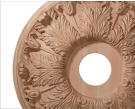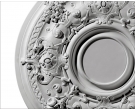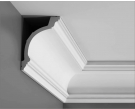Minimalist Style Interior Design
The idea is not completely without ornamentation, but everyhting is as reduced down to a stage where you cannot remove anything further to improve the design, or without disimproving it. The basic geometric forms, elements without decoration, simple materials and the repetitions of structures can represent a sense of order and essential quality. The movement of natural light in minimalist buildings reveals simple and clean spaces. In order to successfully implement a minimalist style storage is key in order to allow the space to remain minimal while still retaining the essential objects you use within that space. Minimalist kitchens are an excellent example of this, where clever use of space and hidden storage is regularly used.
To Recap, the main characteristics of the minimalist interior design style are...
- Cool colours and white or blue lighting.
- Large open spaces with minimum furniture, essentials only.
- Reduced to ideal quantity.
- Storage is key to maintaining minimalism.
- Natural light used as a feature.

 Golden Series
Golden Series  Legacy Series
Legacy Series  Builders Series
Builders Series  Thane Series
Thane Series  Chen's Series
Chen's Series  PS Series
PS Series  Services
Services 